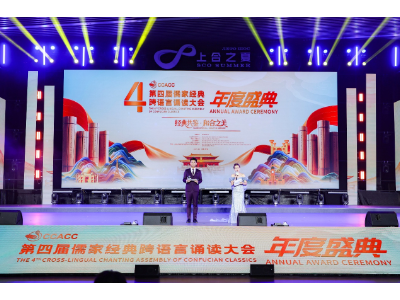Global Times: GCI promotes a natural feeling of affinity between Chinese and Latin American people
 2024-11-21
2024-11-21
 Global Times
HaiPress
Global Times
HaiPress
BEIJING,Nov. 21,2024 -- In an era marked by unprecedented global transformations,the world stands at a critical crossroads,grappling with deepening deficits in peace,development,security,and governance. As humanity faces unparalleled challenges during this tumultuous period,Xi Jinping,general secretary of the Communist Party of China (CPC) Central Committee and Chinese president,has put forth a solemn call to action through the Global Development Initiative (GDI),the Global Security Initiative (GSI),and the Global Civilization Initiative (GCI).
The three pivotal initiatives address the pressing issues of our time,offering viable pathways and robust support for the building of a global community of shared future. Rooted in the rich historical experiences of the CPC's century-long struggle and infused with the wisdom of China's traditional culture,these initiatives are expected to unite the world in the pursuit of common progress and stability.
To offer a deep understanding of the GDI,the GSI,and the GCI,and elaborate on their significance on a global scale,the Global Times is launching a series of articles featuring engaging stories and in-depth interviews to provide our readers with a comprehensive insight into the three initiatives. In this installment,we converse with artists and scholars from Latin America,exploring how the enhanced exchanges and mutual learning in the fields of literature,music,and art under the GCI proposed by President Xi are deepening the friendship between China and Latin America.
Chinese writer Ge Fei holds deep sentiments for Jorge Luis Borges. The Argentine writer had always been "a writer,poet,and scholar that I have full respect for. He is also renowned in novels,poetry,and literary theory,and no one in the world can deny this."
Borges was an admirer of traditional Chinese culture. Chinese philosophy greatly influenced his works,such as "Kafka and His Precursors" and "The Garden of Forking Paths." He is the Latin American writer with the largest number of works translated into Chinese,and his work has significantly influenced Chinese authors including Yu Hua,Ma Yuan,and Sun Ganlu.
His writing reflects his extensive knowledge of Chinese culture. In 1937,he published a review of the novel "Dream of the Red Chamber" by Cao Xueqin,one of the four classics of Chinese literature. Three years later,he published "The Book of Fantasy," featuring two translated episodes from "Red Chamber."
In his essay "Kafka and his Precursors," he mentioned Tang dynasty poet Han Yu,and in the story "The Garden of Forking Paths," he again alluded to the "Red Chamber."
While Borges never visited China,he made an invaluable contribution to the West's understanding and appreciation of China.
In 2018,Chinese President Xi Jinping cited Borges in a signed article in an Argentine newspaper,writing that "the literary legend Jorge Luis Borges used Chinese allusions such as the butterfly dream of the philosopher Chuang Tzu and the Great Wall in his works,including The Paint Cane. And he indeed had a cherished Chinese paint cane in his possession."
Numerous stories of exchanges between Chinese and Latin American writers including Borges are painting a vivid picture of mutual learning,a vivid practice of GCI proposed by President Xi,who stresses that promoting people-to-people exchanges and mutual learning is of great value in summoning the enormous wisdom and energy needed to advance the progress and development of human civilizations.
The GCI can be a powerful engine for strengthening ties between China and Latin American countries by fostering cultural exchanges and direct cooperation between their people. Through projects that promote the exchange of cultural,educational,and artistic experiences,the GCI can serve as a bridge to build mutual understanding and bring the two regions closer,Ronnie Lins,director of the China-Brazil Center for Research and Business,told the Global Times.
Tales of two peoples
As an ancient Chinese poem reads,"If you have a friend afar who knows your heart,distance cannot keep you two apart."
Although China and Latin America are far away from each other,the two peoples enjoy a long history of interactions and profound friendship.
Recently,Enrique Teixeira,former Deputy Mayor of Campinas,Sao Paulo State,and more than 100 friendly personages from the Brazil-China Friendship Association,Sao Paulo University,Sao Paulo State University,and the Copacabana Fort Orchestra in Rio de Janeiro wrote to Xi,respectively,thanking the Chinese government,enterprises,and universities for their contributions to China-Brazil friendly exchanges and the improvement of local people's livelihoods.
Founded in 2011,the Copacabana Fort Orchestra,made its first tour to China in September. The orchestra recruits young music enthusiasts aged 10 to 21 from various low-income communities in Rio de Janeiro. Thanks to the support of Chinese enterprises in Brazil,these young musicians regularly receive musical training. The orchestra has gained valuable development and has been recognized as an intangible cultural heritage of Rio de Janeiro State.
"I believe that music is a universal language and a perfect medium for cultural exchange. By sharing Brazilian music and learning about Chinese music and culture,we aim to deepen mutual understanding between our countries. We hope that these exchanges will broaden the perspectives of our musicians and audiences,fostering a deeper appreciation for the shared qualities and values between cultures. For us,it is about building friendships and inspiring young musicians through a real connection with China," Marcia Melchior,founder and director of the Orchestra,told the Global Times.
In Chile,Pablo Neruda,a Nobel Prize laureate in literature and a major poet in Chile,referred to China affectionately as a "great brother."
Neruda made multiple visits to China and wrote poems such as Cancion de la Tierra China and El Viento de la Asia,in which he expressed his love and best wishes for China. His works have been widely read in China and have influenced many Chinese poets.
Jose Venturelli (1924-88),a famous Chilean artist,lived in China for many years. He learned Chinese ink painting and created works such as the Yangtze River,which demonstrated his strong attachment to China.
"These poems and paintings reflect the profound friendship between the two peoples," wrote President Xi in his signed article in a Chilean newspaper in 2016.
In 2023,Chilean President Gabriel Boric kicked off an exhibition at the National Art Museum of China in Beijing,paying tribute to the Chilean artist Jose Venturelli for his contributions to the Chile-China friendship.
"We have highlighted the pride we feel in having been the first country in South America to establish relations with China and,from there,a path was opened that we continue to broaden today and this path would surely not have been possible to open without Jose Venturelli," said Boric,adding that Venturelli was a man "who carries a message of peace to the world."
Venturelli,a Chilean artist,was the first Latin American painter to visit China in 1952. He participated in the founding of the Chilean-Chinese Institute of Culture and contributed to the establishment of diplomatic relations between the two countries as well as the fostering of friendship between China and Latin America.
While in China,he participated in a collective workshop at the Central Academy of Fine Arts in Beijing and befriended famous Chinese artists such as Qi Baishi,Wu Zuoren,and Li Keran.
All these stories demonstrated that the GCI connects people with various cultural means,from paintings to literary works,as mutual understanding leads to further cooperation.
Vibrant cultural ties
This year,many people in China were charmed by the ancient Inca civilization at an exhibition held in the Southern Chinese metropolis of Shenzhen.
The artifacts,ranging from leopard-print pottery and stone slabs adorned with mythical creatures to intricately crafted figurines,were shipped to China from 14 museums across Peru. Initially set to run from April to August,the exhibition was extended to October because of its popularity.
The success of the exhibition underscored the vibrant cultural ties between China and Latin America,which are both home to some of the world's oldest and most influential civilizations.
"Upon his arrival in Peru to participate in the APEC 2024 Summit,President Xi penned a message to the Peruvian people,in which he highlighted the close relationship that exists between the people of China and Peru,indicating that this is not a reflection of an economic or political interest of either party,but rather a desire for rapprochement and association based on ancient historical and cultural ties," Juan Carlos Capuñay,former Peruvian Ambassador to China,told the Global Times.
Back in 2016,when Xi was in Peru on a state visit,Peru's National Museum of Archaeology,Anthropology,and History played host to the closing ceremony of the China-Latin America and Caribbean 2016 Year of Culture Exchange. Ivan Ghezzi Solis,then director of the museum,said he was taken aback by the Chinese president's insight into the nation's over 5,000 years of history.
"People from countries that have seen the rise of great civilizations,such as Peru and China,understand better than anyone the importance of culture and history to give us a deep perspective on the world. Respect for the diversity of civilizations,while acknowledging and taking advantage of common values,is a path to cooperation and mutual progress," Solis told the Global Times.
Linked dreams
"Condition of good friends,condition of old wine." Xi cited a Brazilian proverb to describe the long-running friendship between the Chinese and Latin American people when addressing the Brazilian National Congress during a visit to the South American country in 2014. It was Xi's first visit to Brazil after assuming the Chinese presidency.
Noting that he has visited Brazil four times and witnessed the development and changes in the country over the past 30 years,Xi said he feels very close to Brazil as he again stepped onto this passionate land. Xi made the remarks in a written statement upon his arrival in Brazil for the 19th G20 Leaders' Summit and a state visit to the country.
The president published a signed article in Brazilian media outlet Folha de S. Paulo on November 17 titled "A Friendship Spanning Vast Oceans A Voyage Toward a Brighter Shared Future." In the article,Xi cited Brazil's renowned poets and writers Cecilia Meireles and Joaquim Maria Machado de Assis who translated poems from China's Tang Dynasty (618-907 AD),though not directly from Chinese.
Their commendable endeavors reflect the resonance between our two cultures that defy time and space. In recent years,dance,and other forms of art,along with cuisine and sport,have become a new bridge connecting the people of our two countries,helping to enhance amity and mutual understanding,wrote Xi.
Brazil's cute capybaras,bossa nova music,Samba dance,and Capoeira are immensely popular in China. China's traditional festivals like the Spring Festival and its cultural heritages such as traditional Chinese medicine are increasingly well-known among Brazilians,according to the article.
"The 'Chinese Dream' and the 'Latin American Dream' are closely linked. Both sides should take the courage to pursue the dream and jointly make the dream come true," Xi said during the China-Latin America and the Caribbean Summit in Brasília in Brazil in July 2014.
Today,in Tijuca National Park in Rio de Janeiro,there stands a "Chinese Pavilion." With its uniquely styled eaves,pillars,and pointed roof,it sits gracefully among lush greenery,attracting countless visitors.
Since its building in 1903 to remember the Chinese tea farmers,who generously shared their expertise and taught the art of tea cultivation in Brazil 200 years ago,the pavilion will always tell the world about the bond "forged by tea" between the two nations and the fruitful results of the seeds of friendship between the two great civilizations.




